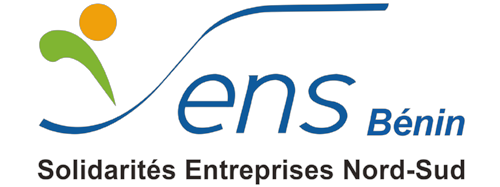The Ultimate Guide to Choosing Your Brand Fonts
Consider your marketing strategy, main message and target audience while choosing handwritten fonts. Brands like Barbie, Kellogg’s, Harrods and many others use this font. Handwritten fonts, also called modern fonts, are cursive font types that turned into digital typography. Handwritten fonts are also script fonts, but they have become so popular that we thought they…
Consider your marketing strategy, main message and target audience while choosing handwritten fonts. Brands like Barbie, Kellogg’s, Harrods and many others use this font. Handwritten fonts, also called modern fonts, are cursive font types that turned into digital typography. Handwritten fonts are also script fonts, but they have become so popular that we thought they deserved a category of their own. However, script fonts are less professional, so use these fonts sparingly unless you want to show off your brand’s creative side.
- You can also mix weights, kerning and styles to achieve contrast.
- Consider these as your brand fonts if you wish to show off your brand personality and emotionally connect with your target audience.
- Or perhaps your project requires not only one or two, but multiple fonts?
- Choose typefaces that support a wide range of characters, accents, and special symbols required by various languages.
This font choice helps establish the rest of the design, it pairs well with the Lomography logotype, the camera product photo, and other design elements. Visme offers a series of premade font combinations that are specifically designed to work together and provide a pleasing aesthetic. These sets take the hard work out of pairing fonts, ensuring no more clashing or visually disturbing font choices for your designs. The first thing you have to do in order to choose a typeface is form a strong impression in your mind about how you want your audience to react to the text.
Best Thin Fonts in 2024: Slim and Light Fonts for Your Elegant Design
It’s meant to be an accent, to stand out, and influence the mood of your design. It doesn’t really matter what type of font it is, but knowing the first one will help you choose your second. Notice from this moodboard, how type really influences the mood of the design. For more tips on why typography is important in design, check out this article to learn more. An important part of the design process is research and inspiration. One of my favorite places to find design inspiration is on Pinterest.
Analyze your brand personality and choose typefaces that support and enhance it. Selecting typefaces with high legibility and readability is essential to ensure users can easily consume the content on your website. Legibility refers to the clarity of individual characters, while readability encompasses the overall ease of understanding the text. A typeface is a collection of characters, symbols, and glyphs with consistent design and visual appearance. Typefaces represent the broader design concept, including various styles, weights, and variations that define a family of fonts.
How To Choose A Font — A Step-By-Step Guide!
Legibility refers to the design of the typeface, as in the width of the strokes, whether or not it has serifs, the presence of novel type design elements etc. It is easy to tell one letterform from another in a legible typeface. For instance, decorative typefaces have how to pick fonts for website low legibility because they are primarily meant to be seen at a glance, rather than read at length. Conversely, typefaces designed for novels or newspapers have very high legibility. You need to design a specific, overall legibility based on the function of the text.
It’s a successful design for many reasons such as using scale with type, a good use of space, and hierarchy. The “CUT” and “TO” are two distinctly different bold serif typefaces. The first is thick and condensed while the second is still bold but wide.
Legibility
Readability is the dynamic interaction of the type style, size, tracking, leading, color and other properties all combined into one overall impression. They add up to a certain typographic style which has a quantifiable degree of readability. For instance, you could use a style that has an intentionally low readability that is part of the message. Or you could focus on designing a high readability because your message is complicated, and you don’t want your type style to hinder the audiences’ understanding in any way. In most cases, communication comes before style, so resolve readability first. It may seem at first glance that legibility and readability are the same thing, but they are not.
Be wary of trendy or popular typefaces that you see everyone else using. If you choose something too niche or close to the times when designing a logo, for example, you’ll find yourself having to redesign it after a few short years. To avoid your design becoming outdated, include classic and well-known typefaces. Check out this fun article on 25 classic fonts that will last a whole design career. For example, if you’re designing a logo you’ll most likely modify one main font and maybe use a secondary typeface. For a website or an app, you’ll likely want to follow the same rule.
Decorative Fonts
Some of the most common emotions they evoke include fun, originality and creativity. According to MDG Advertising, 75% of consumers judge a business by its website design, and 72% say packaging design influences their buying decisions. Since fonts play a key role in website and packaging design, choosing the perfect font can be hugely beneficial for any brand. If your project is based around a specific topic or complex concept, it can pay to put some extra time into researching the history behind the typeface you choose to use. Considering a font’s history before selecting it can add an extra layer of depth and creativity to your design. So, before choosing a font, ensure you’ve clearly established your brand messaging and know what you want to get across.
Each font within a typeface family maintains the overall design consistency while offering different options for emphasis, hierarchy, and aesthetics. Alternatively, use two different fonts with some commonalities in each other. For example, serif fonts have small edges on the ends of every character, while sans serifs don’t. Combine them both to create a contrast while staying on the safe side. Brand fonts are meant to add personality to your brand name.
Serif typefaces
In short, it’s best to choose a typeface that is as complete as possible. And if you choose a free typeface, you’ll find that it is often these critical “extras” that are missing. Make sure that the free typefaces have exactly the features you need for your design and that they are licenced for the work you are doing. In order to know how to choose fonts, we need to understand the various categories of type, the characteristics of each, and recommended usage. In this guide, we’ll refer to three different categories of type when choosing font pairings.
The terms typeface and font are sometimes used interchangeably which can be a little confusing. With text samples using OpenType fonts, you can select text to display the OpenType feature indicator and apply an OpenType feature. In this example, a stylistic set was applied to the selected text.
Create Contrast Between Your Fonts
YouTube uses YouTube Sans, which is inspired by its own logo. Thus the font has angle cuts in the ascenders, arms and curves in the collars and shoulders. Thanks to the availability of these fonts on various websites such as Google Fonts, Behance, Dribble, Dafont and many others. In the editor window of your Visme project, navigate to the left sidebar and select the “Basics” tab. In the example above, the text on the right looks much cleaner due to the consistent and exclusive use of a type for header and another type for body copy. With a commitment to quality content for the design community.

